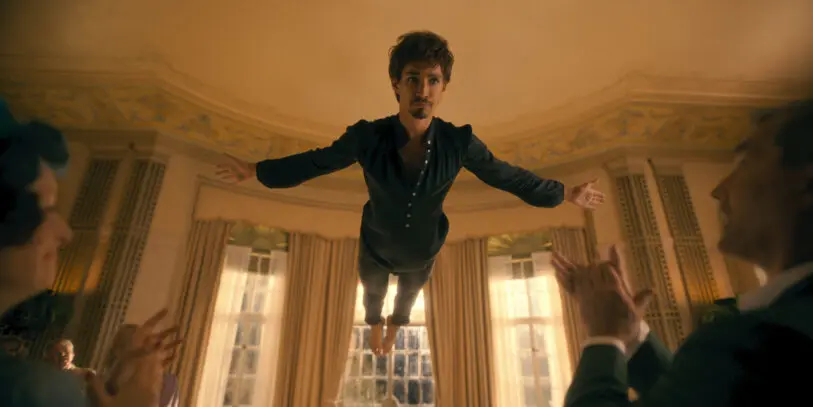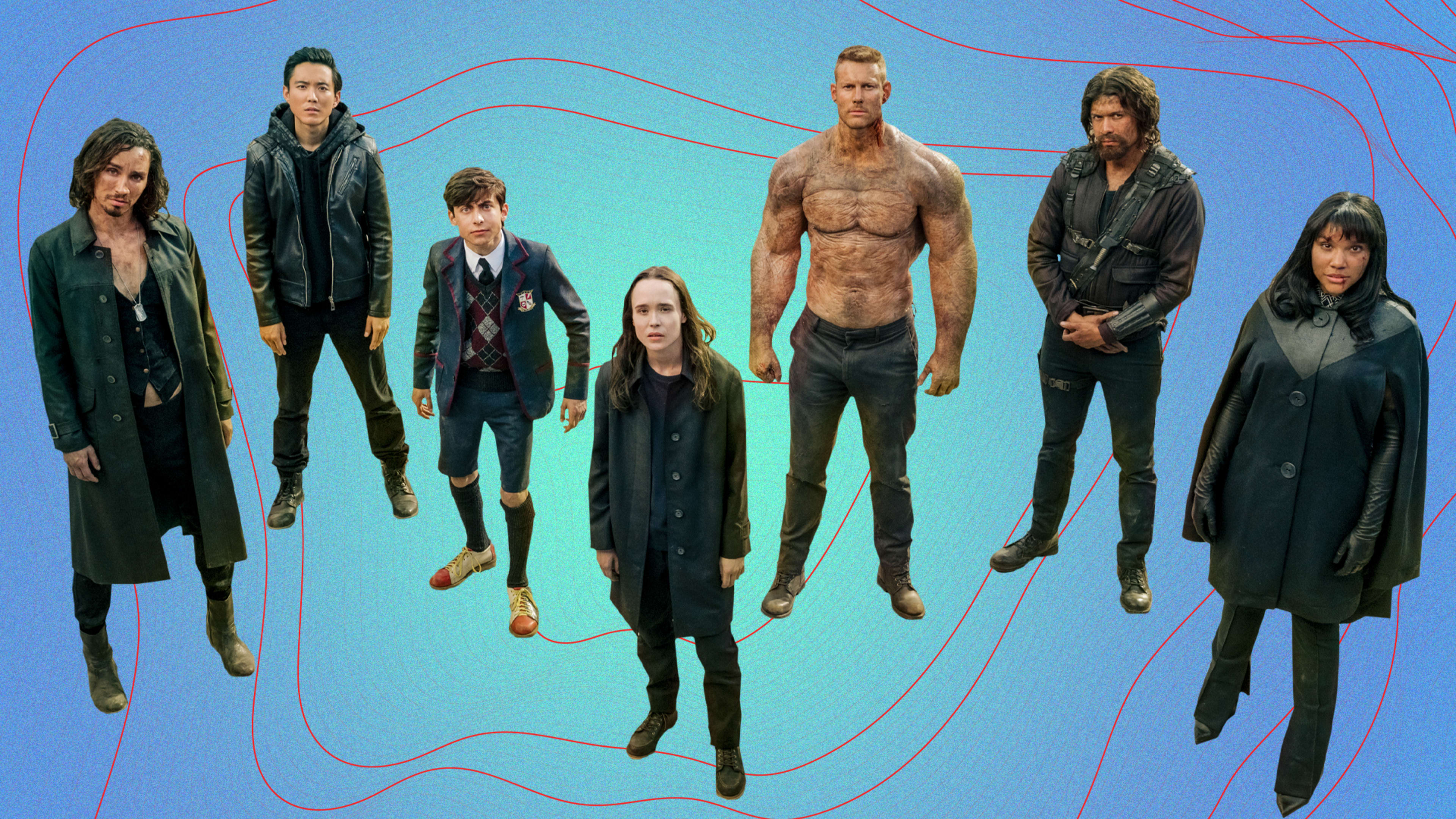Any apocalyptic entertainment unleashed during COVID-coated 2020 was always bound to be imbued with a sense of verisimilitude. But the second season of Netflix’s The Umbrella Academy manages to be even more timely than your average world-ender.
Not only is the fresh batch of episodes centered around trying (once again) to thwart Armageddon, but it’s also about doing so in an atmosphere boiling over with racial tension inflamed by police action. That extra element, which echoes the civil uprising sparked by George Floyd’s killing, wasn’t present in the Dark Horse graphic novels the series is based on. It only exists because creator Steve Blackman thought this superhero show needed to be more firmly rooted in the horrors of reality.
Mission accomplished.
https://www.youtube.com/watch?v=Me0eoCwLj-A
The Umbrella Academy is an unusual superhero show. It’s a live-action Incredibles, by way of The Royal Tenenbaums, with a shotgun blast of John Carpenter. The action starts in 1989, when 43 women around the world mysteriously become pregnant and give birth in the span of one day. An eccentric industrialist named Sir Reginald Hargreeves purchases as many of these otherworldly infants as he can, ultimately snaring seven of them and coaxing out their powers over time.
Voila: The Umbrella Academy.
This material beckoned to Blackman, an alum of Fargo and Netflix’s Altered Carbon, because the Umbrella Academy does not get along at all. His elevator pitch for the adaptation was that it would be “a dysfunctional family show with a body count.” The heightened intergroup hostility is what would separate this bunch from other teams of superheroes, like the X-Men and Amazon’s The Boys. While those crews may endure team tiffs from time to time, the problems within the Hargreeves clan, whose members start the first season having been separated for many years, run so deep that they eventually lead to blowing up the moon in the finale—and ushering in the apocalypse.

“It’s not a superhero show set in the Marvel universe, and I’m not saying that to diss the Marvel universe, because I love it,” Blackman says during a phone interview with Fast Company. “You’re watching characters who are heroic and you sort of want to be them in a certain way. But these characters [in The Umbrella Academy] remind us that we’re all sort of fallible and we all have foibles and that even the superheroes among us are struggling with the same issues.”
In season two of the series, one issue that a member of the Umbrella Academy struggles with will be only too familiar to some viewers.
As the apocalypse breaks out in the final minutes of the first season, the team jumps into a time vortex with the hope of undoing their mistake. As fans of the graphic novels know, the vortex ends up sending them back in time to 1960s Dallas, in the lead-up to the JFK assassination.
The second season premiere begins with our heroes scattered once again, landing in Dallas at different times between 1960 and November 1963. When the only Black member of the group arrives, the first thing she does is enter a restaurant . . . where the owner immediately scowls and points to a sign that reads “Whites Only.”

“I couldn’t imagine doing this story and putting a woman of color in Dallas in 1963, and not telling a story about racism and what it would be like for her,” the creator says.
After Allison’s introduction to the harsh reality of the segregated ’60s, she eventually ends up romantically linked to an activist who is organizing a sit-in around the time of President Kennedy’s doomed Dallas visit. It’s a subplot that involves politicians using police as a brutal buffer against racial equality.
Blackman set out to make it as uncomfortably realistic as possible.
“Even though the show is a heightened fantasy, we felt this part had to be told honestly,” the creator says. “We looked at how brave the civil rights advocates of the time were to go into these places with such hostile people, and we made sort of an amalgamation of many of those sit-ins. When we finally shot our sit-in sequence with Allison, it was a very hard couple of days on set. It was very emotional for everybody.”

Although Allison possess the telepathic power to get into people’s heads, it’s something she hides from her civil rights activist partner Ray (Yusuf Gatewood). Or at least she does so until the moment after police storm the sit-in, pull out Ray, and begin to beat the snot out of him with billy clubs. At that point, Allison can’t help but intervene. She walks right up to the officer beating on Ray and uses telepathy to make him stop. If she hadn’t, Ray might have died. Afterwards, however, Ray can only view Allison’s intervention suspiciously. What could she have possibly said to inspire such a reaction? As Ray memorably puts it, “There ain’t no way in hell that a white cop is gonna walk away just because a Black woman tells him to.”
Even in the 1960s, Ray knows what we still know today; that such an outcome could seemingly only happen with the assistance of superpowers.
Of all the storylines in this season of The Umbrella Academy, Allison’s is the one that resonates most, with its emphasis on the everyday evil of racism, even as an(other) apocalypse looms.
This reflection of reality transcends multiple timelines.
“It’s been amazing and humbling to see this Black Lives Matter movement grow,” Blackman says. “It was incredible to watch how, even though we like to think we’ve made huge leaps and bounds in terms of racism, clearly we have a long way to go, and we really haven’t improved as much as we like to think we have.”
Recognize your brand’s excellence by applying to this year’s Brands That Matter Awards before the early-rate deadline, May 3.
